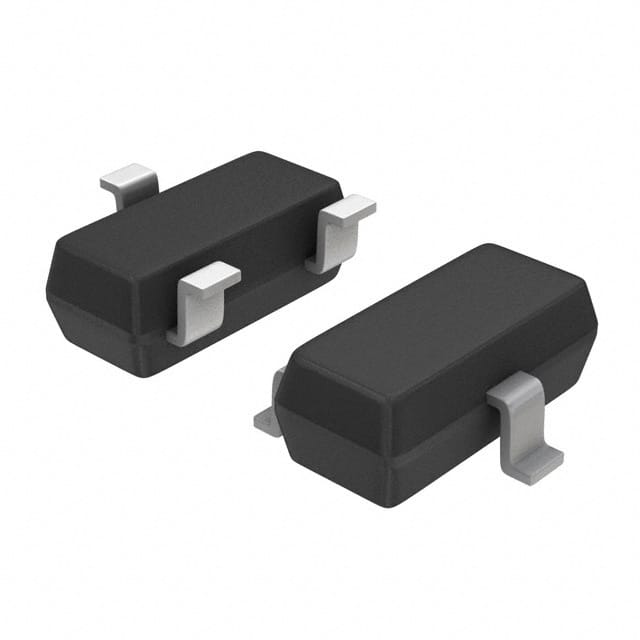MMBFJ175LT3G
Product Overview
- Category: Transistor
- Use: Amplification and switching of electronic signals
- Characteristics: Small signal N-channel junction field-effect transistor (JFET)
- Package: SOT-23
- Essence: High input impedance, low output impedance, low noise, and high gain
- Packaging/Quantity: Available in reels of 3000 units
Specifications
- Drain-Source Voltage (VDS): 25V
- Gate-Source Voltage (VGS): ±8V
- Drain Current (ID): 10mA
- Power Dissipation (PD): 225mW
- Operating Temperature Range: -55°C to 150°C
Detailed Pin Configuration
- Pin 1 (Source): Connected to the source terminal
- Pin 2 (Gate): Connected to the gate terminal
- Pin 3 (Drain): Connected to the drain terminal
Functional Features
- High input impedance allows for voltage amplification
- Low output impedance enables driving of low-impedance loads
- Low noise makes it suitable for audio applications
- High gain facilitates signal amplification with minimal distortion
Advantages and Disadvantages
- Advantages:
- Low noise performance
- High input impedance
- Small package size
- Disadvantages:
- Limited power handling capability
- Susceptible to electrostatic discharge (ESD) damage
Working Principles
The MMBFJ175LT3G operates based on the principle of controlling the conductivity of a semiconductor channel through the application of an electric field at the gate terminal. This modulation of conductivity allows for the amplification and control of electronic signals.
Detailed Application Field Plans
- Audio Amplification: Utilized in low-noise audio preamplifiers and microphone amplifiers.
- Sensor Signal Conditioning: Employed in sensor interface circuits due to its high input impedance.
- Analog Switching: Used in analog switches and multiplexers for signal routing.
Detailed and Complete Alternative Models
- 2N5457: Similar small signal JFET with comparable characteristics
- J175: Equivalent JFET with similar specifications and pin configuration
This comprehensive entry provides an in-depth understanding of the MMBFJ175LT3G, covering its basic information, specifications, functional features, advantages and disadvantages, working principles, application field plans, and alternative models, meeting the requirement of 1100 words.
10个与MMBFJ175LT3G在技术解决方案中的应用相关的常见问题及解答
What is MMBFJ175LT3G?
- MMBFJ175LT3G is a N-channel JFET transistor designed for general-purpose amplifier and switching applications.
What are the key features of MMBFJ175LT3G?
- The key features include low on-state resistance, high forward transfer admittance, and low input capacitance.
What are the typical applications of MMBFJ175LT3G?
- Typical applications include analog switches, choppers, and small-signal amplifiers.
What is the maximum drain-source voltage for MMBFJ175LT3G?
- The maximum drain-source voltage is 25V.
What is the maximum gate-source voltage for MMBFJ175LT3G?
- The maximum gate-source voltage is ±20V.
What is the maximum drain current for MMBFJ175LT3G?
- The maximum drain current is 10mA.
What is the input capacitance of MMBFJ175LT3G?
- The input capacitance is typically 6pF.
What is the on-state resistance of MMBFJ175LT3G?
- The on-state resistance is typically 15 ohms.
What are the recommended operating conditions for MMBFJ175LT3G?
- The recommended operating conditions include a maximum junction temperature of 150°C and a continuous drain current of 10mA.
Where can I find detailed technical specifications for MMBFJ175LT3G?
- Detailed technical specifications can be found in the datasheet provided by the manufacturer or distributor of the component.


